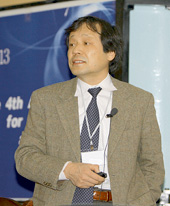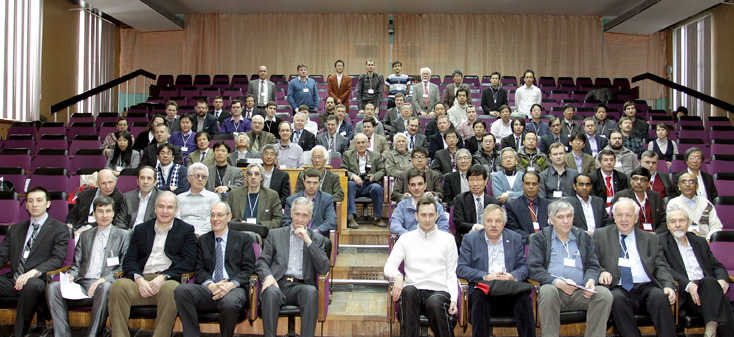Topics
Asian Forum for Accelerator and Detectors—AFAD 2013—was held
May 1, 2013
The Asian Forum for Accelerator and Detectors—AFAD 2013—was held February 25–26, 2013 at the Budker Institute of Nuclear Physics (BINP), Novosibirsk, Russia. AFAD was inaugurated in 2011 with the aim of strengthening the cooperation and collaboration among Asian countries in the research and development of accelerators, accelerator-related technologies, detectors, as well as their applications. In this year, 110 researchers from both academia and industry from ten countries and regions, including Russia and Japan, attended the forum.
During the forum, there were 47 presentations in six working groups (photon science, hadron (neutron) science, detector technology development, industrial and medical applications, innovative accelerator science, and network and computing), followed by a summary talk in each group.

Prof. Junji Haba, Institute of
Particle and Nuclear Studies, KEK
One of the attendees, Prof. Junji Haba (Institute of Particle and Nuclear Studies, KEK), on the forum, “We witness a growing momentum to promote the use of accelerator, accelerator technology, and the radiation towards practical applications in various countries; Russia, a host country of the forum, is not an exception. In particular, I was impressed from a report that a new system toward realizing industrial applications of these technologies has been moving ahead at a fast pace in Russia through the establishment of organizations and a new technology center, RTC, at BINP. As such, hosting AFAD by each country/region in rotation allows participants to have an opportunity to learn detailed information focusing on special situations of each host country/region that cannot be learned at other conventional international conferences. I would say that this is the unique value of AFAD. In the future, I would like to work harder to make the Standing Convener Committees, which have been being organized since the last AFAD, each for the six working groups, to actually function as a core of communication among our fellow members all year round.”

Many researchers gathered together from all over Asia. Photo credit: BINP